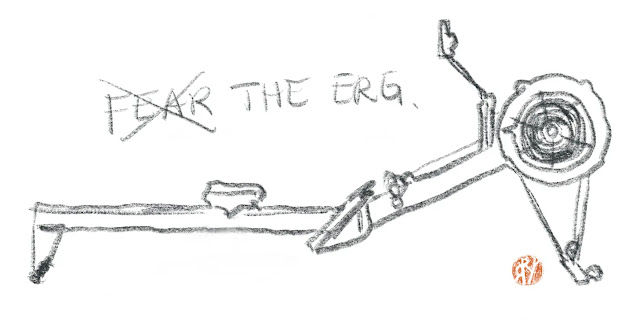Best Rowing Drills: 7 Questions with World Champion Coxswain Phelan Hill
 |
| Phelan Hill at the helm (Photo: Pete Reed) |
As a reigning world champion and Olympic bronze medalist coxswain of the British men's eight, Phelan Hill knows a thing or two about what makes boats go fast. And, because coxswains are people, too, we wanted to track him down for a few quick questions about how he guides his crews through a training session. Here, he shares a little of his expertise, on and off the water.
RR:When you first arrive at the boathouse, what's the first thing you think about/do?
Phelan Hill: Before I even arrive at the boathouse I’ve been thinking about the day. I’ll always read the training program in advance and will have given thought to how the sessions should be structured and what I want to achieve/deliver. When I get to the boathouse the first thing I then do is get the blades for the eight out and start getting changed.
RR: Do you meet with the crew before each outing? How are those meetings structured, if so? For racing, how do you go about building your race plan?
PH: Before each outing we will always meet as a crew and discuss the session, it’s not long but a few specific points from Jürgen [Grobler] before the session stars always helps.
When racing our meetings are much longer and more structured, we will usually meet the night before so everyone can go to bed clear in what we need to do. Developing the race plan is quite a long, organic process with a number of iterations throughout the season. I’ll start by putting forward a template, and then as the season develops and we race more, we will review and modify—it probably isn’t until our pre-world champs camp when we finalize our plan.
RR: What's the first drill or exercise you'll typically do with the crew when you launch? Does it vary depending on the session to follow, or by time of year?
PH: I have no particular fixed drill—I personally like building from the front, but generally the effectiveness of all drills will be dependent on a crew-by-crew basis. I’ll always try to vary the drills, too, as you don’t want the warm up just to be a routine you want to feel some positive impacts and make sure the drills are setting up the crew for the rest of the session. If the drill is poorly executed and the paddling after isn’t particularly good, then I’d probably say it isn’t the right drill or you’ve done it too much!
 |
| Hill (right) and Constantine Louloudis in Lucerne (Photo: Pete Reed) |
RR: Do you have the same approach on race day? Or do you vary the drills/warmup during racing season?
PH: Drills/the warmup will vary significantly between whether we are racing or paddling. I have a race season/race warmup which is very much routine—I never feel you should mess about on race day.
RR: How often do you single out individuals versus having the whole crew focusing on something? Is it possible to focus too much on an individual/take away from the group focus when talking about technique?
PH: I think that varies, if the crew is new I’ll turn to focus on crew rhythm, get the pattern of rowing strong, get people confident in the boat. Once that is done I think it is far easier to focus on individuals once the boat is going strong. I’ll then focus quite heavily on individuals but it’s still about fitting into the crew rhythm.
Yeah, I think it is very easy to focus too much on individuals and before you know it the crew rhythm is bad because people are just worried about their own thing rather than what the boat is doing, you have always got to be aware of that balance.
RR: What are your go-to drills for rhythm in the crew?
PH: Not sure I have a go to drill as it will really depend on what is happening in the boat but if I had to pick a single drill it would be a front end exercise and some legs only rowing, get the legs firing together and the boat seems to come along very quickly!
RR: As the session winds down, what are some ways to keep the focus on sharp rowing on the way back to the boathouse?
PH: I guess on the bigger sessions to keep the focus going, I’ll still be on the guys about holding the splits, reminding them of the importance and desire to keep improving, being better than when we started. I may also put in a few rolling drills to keep things fresh, e.g. square blades, cutting the cake— anything like that can work.
Thanks very much to Phelan for taking the time! You can follow him on Twitter @PhelanHill. Thanks as well to Pete Reed for the photos—you can check out more of his photography by following him on Instagram @PeteReed.
And, while we're talking coxing, take a look at the coxswain resources section on our Coaching page—know any links that we should include? Email us.
You can check out the rest of the #BestRowingDrills series on our Rowing Drills page.
-RR



